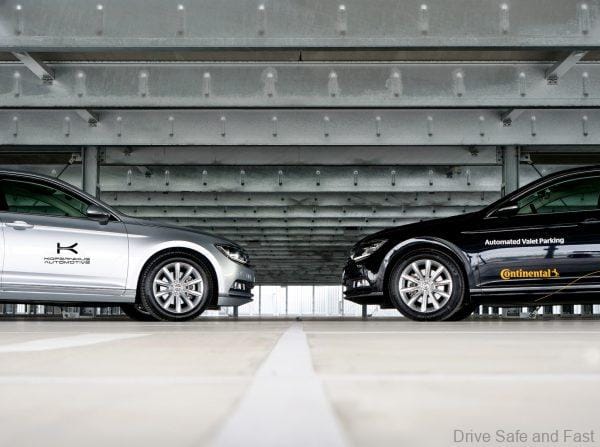Automated Valet Parking might be coming to airports and hotels through Continental soon.
Most of us know Continental for their tyres. However, the German company has its fingers in many pies within and beyond the automotive industry. From Advanced Driving Assist Systems to interior fittings, Continental as a whole is more of an automotive-tech company than just a tyre company. Their latest investment is in a small German startup called Kopernikus Automotive.
This isn’t the first we’ve heard of Kopernikus Automotive. They’ve worked with Porsche before to create an autonomous drive setting within their workshop premises.
As that example suggests, Kopernikus Automotive is concerned with autonomous driving systems. However, Continental is interested in one very specific type of autonomous driving system that will work in airports and hotels.
Automated Valet Parking
We’re all familiar with self-driving car technology that is slowly advancing. The latest production breakthrough was with the Honda Legend and its Level 3 Self-Driving capability.

But what if you wanted to bring some form of self-driving to less sophisticated vehicles? After all, it took more than a decade for other vehicle technologies to trickle down to the cheapest new cars, so it stands to reason that self-driving for all will not be a reality for all in the near future.

Well, that’s where the Automated Valet System by Kopernikus Automotive comes in. This system is deployed within the physical premises of, let’s say, an airport. It will consist of a load of sensors, cameras, and other hardware and software. A car modified with Central Motion Control will be able to self-drive its way into a parking lot after the driver hands over control to the system via an app.

Which Cars Work With The Automated Valet System?
Kopernikus can modify “Central Motion Control” onto almost any vehicle that has these components:
- an automatic transmission
- an electric parking brake
- electric power steering assistance
- an intelligent communication unit

Most modern cars are indeed equipped with these components and ought to be compatible.
What’s the use case?
Obviously, it’s a bit far-fetched to think car owners are going to spend money for such a niche scenario. However, this sort of thing could work really well for car-sharing services like GoCar and SoCar. Even car rental companies or car companies themselves could retrofit vehicles to have this capability, as it would make returning the cars a little easier and cooler for users.